Colorants Information
Colorants are natural or synthetic additives — including dyes and pigments — which impart color, hiding power, and specialized physical attributes to a finished substance or product. In addition to color, they may add bulk, durability, and corrosion resistance to an intended substrate.
The video below briefly discusses the use of masterbatch colorant in the plastics manufacturing process.
Video credit: ProtoLabs/ CC BY 3.0
Applications
Colorants are widely used to add color to a variety of materials within a broad spectrum of industries. The following substrates are frequently treated with colorants.
- Adhesives
- Art supplies
- Ceramics
- Coatings/paints
- Concrete
- Cosmetics
- Food and beverage products
- Greases and lubricants
- Inks
- Paper
- Photographic materials
- Textiles/leather/fur/fibers
Colorant pH
Colorants, dyes, and pigments are typically formulated with a specific potential hydrogen (pH) value. pH is important to coloring and dyeing processes because different substrates react more favorably to different pH values. For example, when dyeing textiles with an acid dye, a low pH assists in bonding the dye to protein fibers by forming and strengthening the necessary hydrogen bonds. Conversely, in the case of reactive dyes, a high pH produces a stronger bond between cellulose fibers found in cotton materials. Therefore, necessary pH is largely dependent on the colorant used, the intended substrate, and the intended application.
Colors
The colors of industrial and commercial colorants are determined by the chemical composition of each individual product. For example, because phthalocyanine (C32H17N8) compounds naturally carry an intense blue-green color, they are widely used in the production of blue and green dyes.
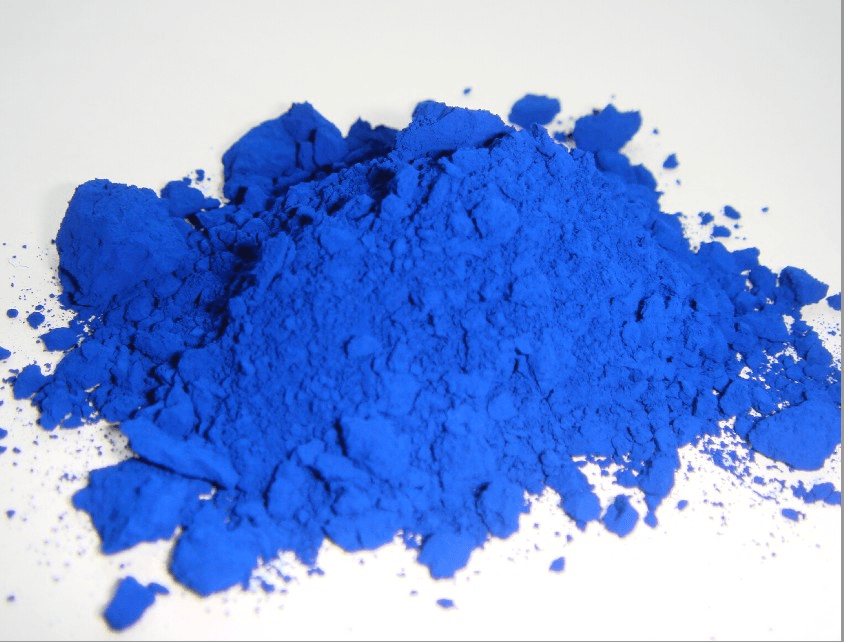
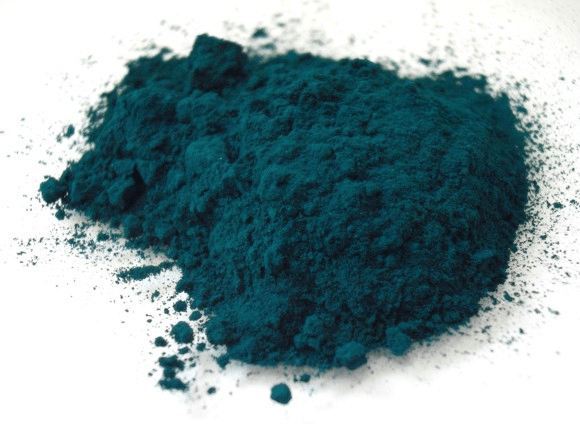
Two different phthalocyanine compounds: phthalo blue (left) and phthalo green.
Image credit: Wan Yi Industry | Bridgat.com
While compounds like phthalocyanine are used for specific colors, others are used to impart physical qualities to a variety of colors. For example, calcium borosilicate dyes may take on a variety of colors, but all have a similarly opaque quality. Some other common chemicals involved in colorants include:
- Modified calcium borosilicate: turquoise
- Chromium oxide: green
- Mica: various metallic pigments
- Cobalt aluminate: blue
- Antimony compounds (i.e. nickel antimony titanium, etc.): yellow
- Perylene: red/maroon/brown
Color Theory
Colorant manufacturers often rely on color theory and the color wheel to describe and specify their products.
The additive color system is based on the fact that each color in the spectrum can be produced by mixing different quantities of red, green, and blue (the primary colors). When primary colors are placed at equally-spaced intervals around a color wheel, the secondary and tertiary colors between them are comprised of mixtures of the two adjacent primary colors, as shown below.
It is important to note that, within the printing industry, cyan, magenta, and yellow are regarded as primary colors. This system is known as the subtractive (or CMYK) system to contrast the additive (RGB) system above. In general terms, the subtractive system is used when the colors do not emit light but merely reflect it from surrounding sources; the additive system is used for entities which emit the light themselves, such as monitors and televisions.
In addition, when all primary additive colors are added together they make white, whereas the mixing of all subtractive primary colors yields black. (The K in CMYK stands for black to distinguish it from blue.)
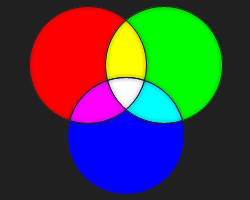
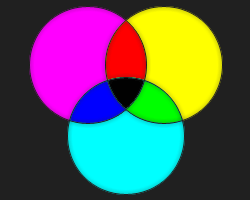
Primary colors of the additive (left) and subtractive systems, showing the product of all colors at each center.
Image credit: Colors on the Web
Colorant manufacturers may use a color wheel to identify the color of a manufactured product, or to compare each different product at sight.
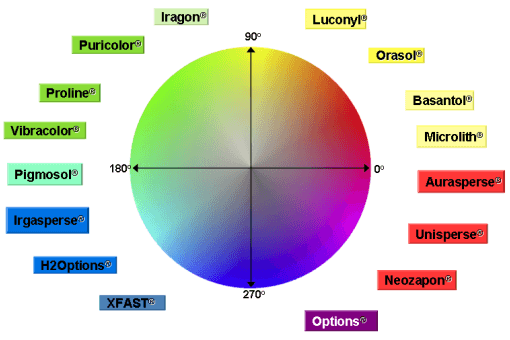
A color wheel with trademarked products situated at their approximate color.
Image credit: BASF
Type
Colorants can be specified by type, as shown in the table below. The types listed are not meant to be mutually exclusive, as the first two types are broad types of colorant, while the latter three are form factors of these two types. For example, a pigment may exist in powder form or liquid masterbatch form, depending on its intended use.
The term "masterbatch" refers to a concentrated mixture of additives which has been encapsulated into a liquid or resin; it is used to color or otherwise affect raw polymers during the manufacturing process.
|
Type |
Description |
Industries |
|
Changes color due to wavelength-selective absorption; almost always water-soluble; may be organic or inorganic; has strong affinity for intended substrate. |
Textiles, inks, food additives |
|
|
Similar to dye but almost always insoluble; no affinity for substrate. |
Inks, paints, plastic/rubber extrusion, art supplies |
|
|
Dry powder |
Form of pigment; large choice of grades results in flexible formulation. |
Inks and coatings |
|
Liquid masterbatch |
Pourable liquid/paste form of pigment; may include additional additives and surfactants; easy to mix. |
Liquid inks and coatings |
|
Solid masterbatch |
Pigment form consisting of pellets, flakes, or granules; mixed into solid resins; may contain plasticizers and other additives. |
Plastic and rubber molding |
Standards
Colorants may be manufactured, used, and tested based on various standards. Examples of colorant standards include:
- ISO 105-Z11 - Textile test for color fastness: evaluation of speckiness of colorant dispersions
- ASTM D4303 - Standard test method for lightfastness of colorants used in artists' materials
- A-A-3108 - Universal colorants for tinting enamel
References
University of Wisconsin-Green Bay - Color Wheels and Color Systems
